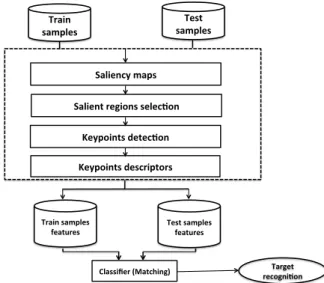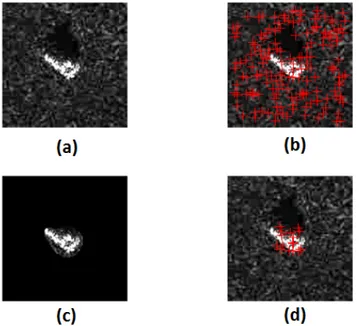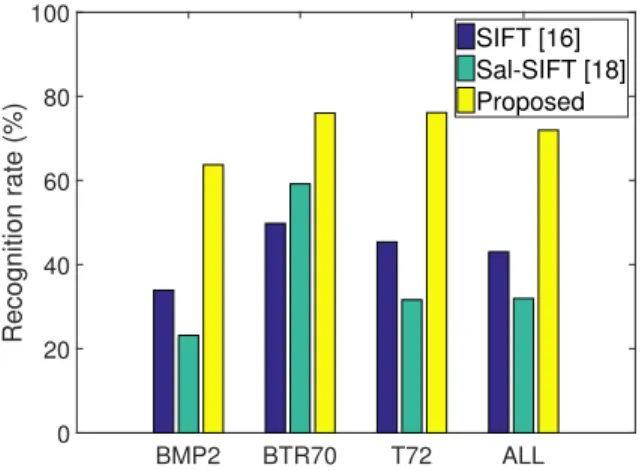Saliency Attention and SIFT Keypoints Combination for Automatic Target Recognition on MSTAR dataset
Texte intégral
Figure




Documents relatifs
The aim was to find the images that correspond to the same individual whale; and the basic idea was to create the mathematical representation of each image based on visual
To address this problem, we demonstrate herein that epileptic seizures can not only be detected by global chemometric analysis of data from selected ion flow tube mass
The method is based on an enhancement of FKP images, followed by a matching process of SIFT descriptors presented in our previous work concerning vein and face recognition using
Second, it is possible to attack the image by introducing in the picture visual elements that often match with other im- ages from the database, such that the image to be concealed
These attacks can delude systems using SIFT targeting application such as image authentication and (pirated) copy detection.. Having some expertise in CBIRS, we were extremely
Centre de recherche INRIA Bordeaux – Sud Ouest : Domaine Universitaire - 351, cours de la Libération - 33405 Talence Cedex Centre de recherche INRIA Grenoble – Rhône-Alpes : 655,
Our scale and affine invariant detectors are based on the following recent results: Interest points extracted with the SIFT detector which is adapted to affine transformations and
Our approach for time series classification builds on two well-known methods in computer vision: local features are extracted from time series using a SIFT- based approach and a